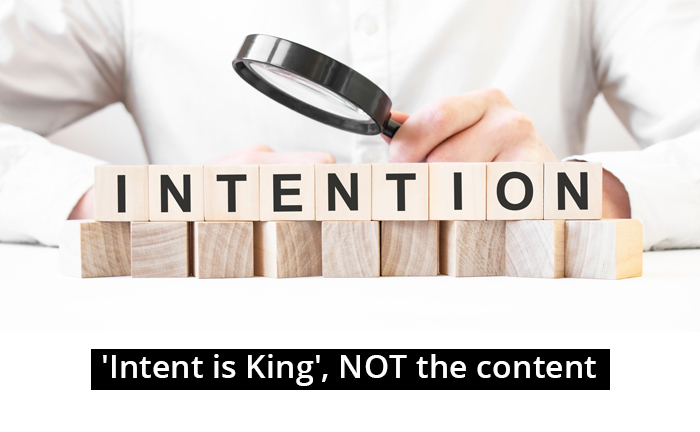
Isn’t it great when you get what you want? We all have needs or wants. In the social media age when you shop online, you traverse the internet to find what you are looking for with an intent to shop. So, what is intent marketing and what is it good for?
The intent is short for intention. It’s what users want and everything else that leads to a searcher making a purchase. Intent marketing assists users on the buyer journey. Google algorithm contextually derives the meaning of a search and churns out search results that broadly and narrowly assist in a search.
To put it simply, intent marketing promotes directly to people, exactly what they wish to buy, and all other possible information they may need to make that purchase.
Intent marketing is an important part of content marketing and search engine marketing. Intent marketing is used by marketers to identify (contextually) what a person is looking for. It then creates ads for them to click on that, directly and indirectly, matches their search.
• Discover intent by understanding the user’s mindset
You’re probably thinking identifying keywords is all there is to intent marketing, but there’s more. The keywords in Intent marketing have to be precise and well defined even while being broadly related to a search. Use keywords that precisely describe what you’re offering whether it’s an actual product or a user path that leads to the search they are doing.
• Example of broad and narrow keywords
It’s human nature to want things, but we don’t want the same thing all the time. Timing of ads is critical to getting landslide results from search engine campaigns. Take, for example, someone who wants a BMW car – but that could mean he wants a brand new automobile or may want to rent one instead. It could also mean he’s looking for a second hand one or wishes to compare cars in the market. Place your generic and narrow keywords accordingly.
• Intent marketing and the buyer journey
Anyone with experience in marketing knows that the most amount of sales come from having a user-driven buyer journey. It’s what takes a user out away from the competition from other brands, creating brand loyalty. Intent marketing is the first step to a buyer’s journey.
• Static answers and deep intent keywords
Ever google for words like ‘what is a Nissan’s top speed’? You’ve probably done something similar and found that the answer is always the same. This reveals that these keywords are static. Someone or a whole load of people have already created answers for these keywords and the answers are ranked. However, if you were to search for terms like ‘Buy Nissan in my city’, you’d find a paid ranking of keywords with deep intent. It gives you a better chance of scoring a user to enter your buyer journey.
Now that you know all this, here’s what more content writers should be aware of when creating deep intent in keywords:
• Keep deep intent keywords central to your content strategy
- Intent comes first – then brainstorm about the ad content next.
- You’ll probably get a lot of traffic for low intent keywords – it’s probably not the result you’re looking for and rather useless.
- Give searchers what you promised them. Ads should lead to valuable content that users are looking for, not dot com pulp fiction.
- For page, ranking creates multi-tier content that works best for skim readers as well readers who want to delve deeper into the subject.
- When creating content as part of the buyer journey after they’ve clicked on an ad, be sure to add the intent. Blogs with intent spun into the keywords are more convincing than generic broad content.
- Google lets you bid for keywords. If you can’t afford a narrow, deep keyword today, you can try again next time. Either this or you can bid more for high intent keywords.
It’s not as hard as you think when you’re working with experienced PPC and search engine marketers. Figuring out narrow and deep intent can save a whole load of budget, by adequately managing ad spends.
• Google and its tireless efforts to maintain the intent
Sometimes organic broad keywords can find themselves in the page ranking of google. Take, for example, words like dominoes pizza. It’s not an ad for dominoes. It’s probably getting domain ranking because of the number of people who order pizza online.
Google, however, is aware of this. It continuously tries to boot such keywords from the page ranking so that more relevant ads can take their place. Google is constantly working on its algorithm to do away with these low intent keywords that get in the searchers’ way.
Deciphering the intent of customers is not difficult if you look closely at the volume of search terms. Chasing deep intent keywords gives you leads that are just a few steps away from being converted. Once you’ve discovered the keywords that work best for your brand, you can use them at will to get more ROI.
Let me know if you want any further information on this, happy to help.
Take care!




0 Comments